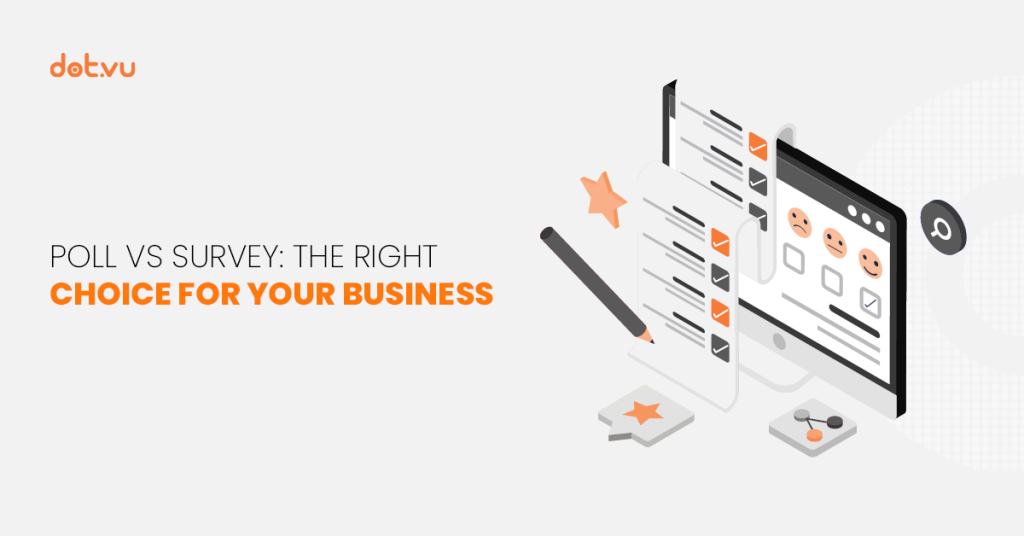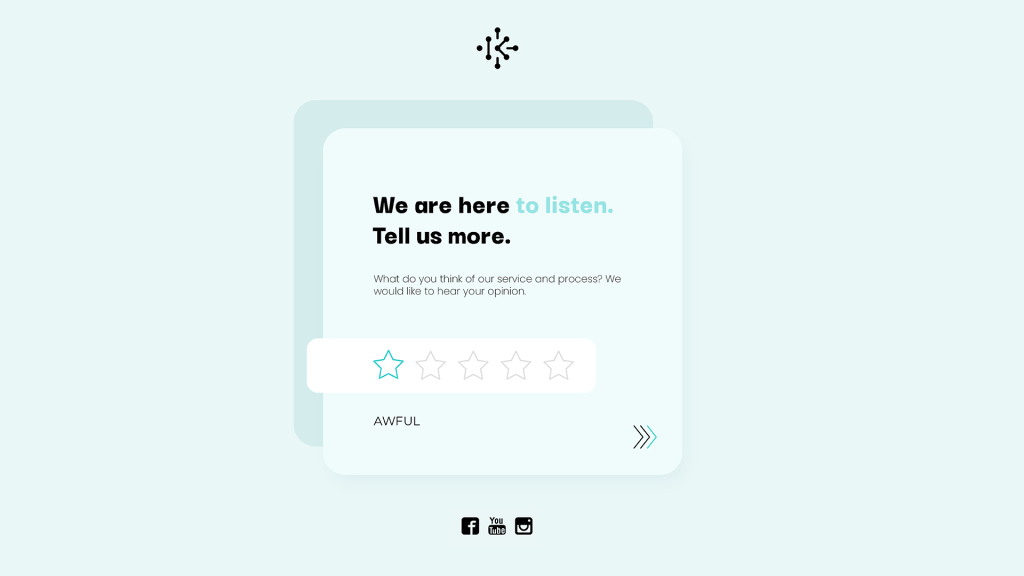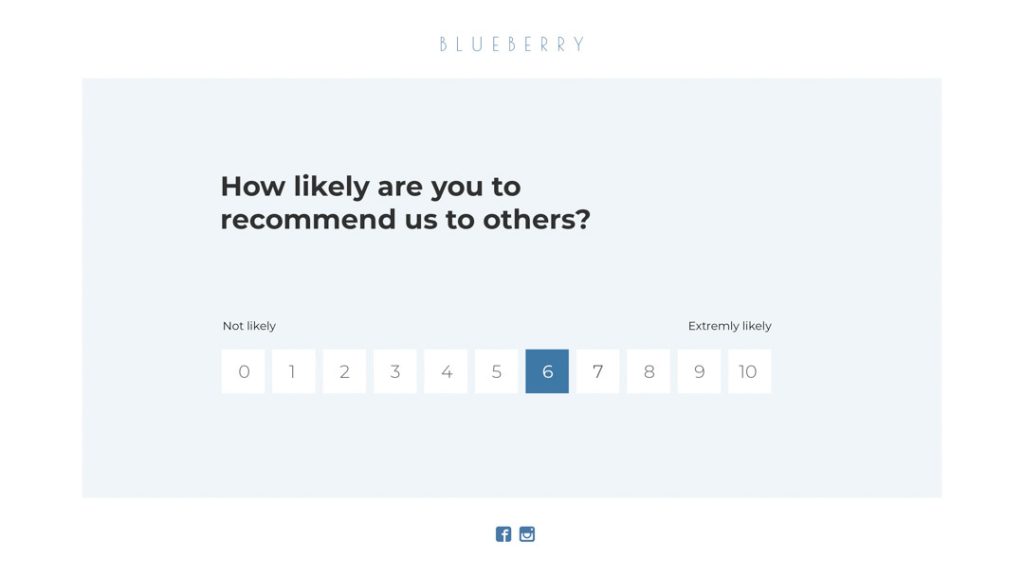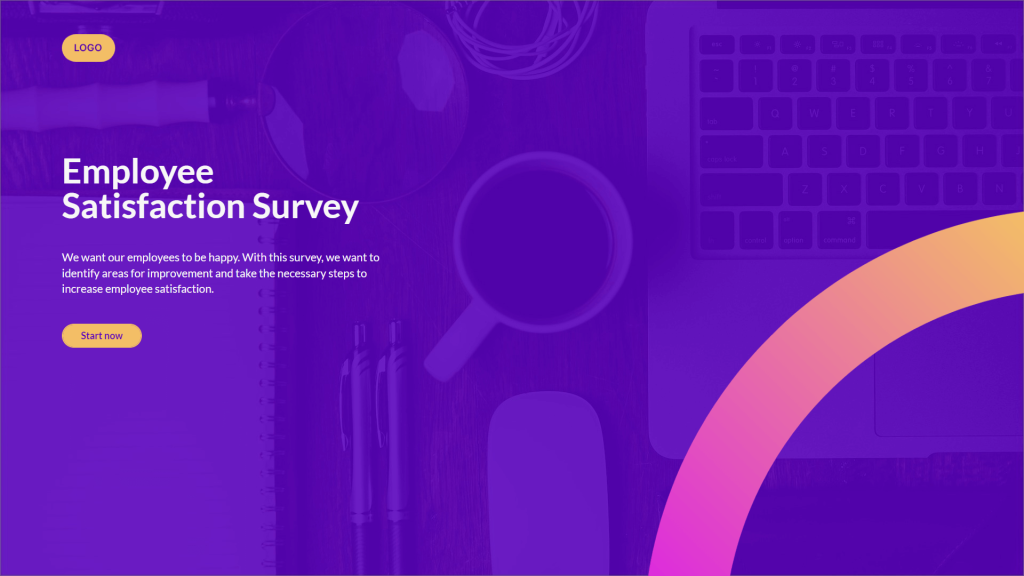
If you’re searching to conduct business or organization research but aren’t certain of the difference between poll vs survey? While both are great tools for data collection and analysis, they vary in approach, objective, and strength. Polls and surveys are vital research tools that help us understand the attitudes, opinions, and behaviors of people because they offer insight to a decision-making process.
But as it turns out, given the bunch of methods out there, and how tedious some can seem at first, this is easier said than done! And between us, that is why we are here! This article will take you through the differences between polls and surveys alongside tips on when to use one over another for maximum impact. And last but not least, we will take a look at how Interactive Polls and Surveys are an engaging, effective tool for research.
After reading this article, you should have a good grasp of why we use polls and surveys and how the two differ from each other. If you are looking to know the secrets of accurate and effective research, then let us get started!
Table of contents:
- Understanding the basics of Polls
- How can polls help businesses gain customer insights
- Types of Polls
- Understanding the basics of Surveys
- How can surveys help businesses gain customer insights
- Types of Surveys
- The key difference between Polls and Surveys
- Improving workplace culture with surveys and polls
- Polls vs Surveys: Which to choose for your business
- Engaging your audience with Interactive Polls and Surveys
Understanding the basics of Polls
Are you a fan of polls? Love them or hate them, polls are a highly used tool to gain public opinion on just about everything. Researchers, journalists, and policymakers use polls to get feedback across a variety of subjects from political campaigns to marketing surveys.
But what exactly is a poll? In short, a poll is a method of gathering data by asking a small group of people a set of questions. There are many different types of poll questions, each designed to serve a specific purpose.
Polls are a valuable tool for gaining insights, but they have their drawbacks too. For one, polls rely on a small target audience who may not be a reflection of the greater public. Moreover, polls can be swayed by the fact that experts or other analysts ask leading questions and how they word them. Such problems do not eliminate the usefulness of polls, but they limit them nonetheless.
Here’s an example of a poll question: “Which flavor of ice cream do you like best, chocolate, vanilla, or strawberry?”
Something to answer for laughs, and/or a market research survey on consumer inclination. Simple and easy for people to choose their preferred flavor quickly. So this is not a poll that should be expected to tell us anything about the important things in society but it can be fun to see how people relate to each other.
How can polls help businesses gain customer insights
Polls are an effective tool for companies looking to gain a better understanding of their potential or current customers. Companies can get answers to all the essential questions such as whether a customer will buy their products, what customers like about their products or services and more by using polls. It lets you use this data to help your business make decisions based on what the customer is saying — whether that be launching a new product or even just activities to optimize an existing one.
Besides, they also help to evaluate your marketing efforts. Companies can ask customers specifically about what advertisements or messaging they experienced, and target their marketing efforts accordingly.
Overall, polls provide a quick and easy way for companies to collect customer feedback and make informed business decisions that can help improve their marketing efforts position themselves confidently to rivals in their industry.

Here is an example of a Poll template by Dot.vu
Types of Polls
1. Opinion polls
You can use opinion polls to get a feel for the general mood surrounding an specific product or service. For example, maybe if you want to measure customer opinion on a new product, political issue, or social phenomenon.
2. Customer satisfaction polls
Gauge customer satisfaction related to a specific product, service, or experience. Asking questions about quality, value, customer service and all the rest can help you analyze actionable areas where you may be lacking while getting insights into what customers really want.
3. Exit polls
These polls ask for an individual’s opinion as they are leaving the location/event. Exit poll is one of the most popular examples, where a business uses an exit poll after a trade show or event to ask attendees what they think about their products and marketing.
4. Event polls
Event polls create hype, excitement and participation so that the attendees get an opportunity to voice their opinions instantaneously. They drive participation and engagement levels, in addition to cultivating a sense of ownership among the participants toward the event.
Related: How to promote an event
Understanding the basics of Surveys
Why has Netflix and Amazon been able to predict what you want to watch or buy? The answer lies in surveys! Surveys allow businesses and researchers to acquire some valuable insight into consumer preferences and behavior. From filling a quick online quiz to attending an extensive telephonic interview, surveys are everywhere around us.
So, what exactly is a survey? Basically, a survey is an information gather process in which we ask several questions to more than one person. Surveys can be giving various response formats like online surveys which take a couple of minutes to telephone survey, up to an hour for each survey. However, regardless of the format surveys are a much-needed tool to collect data from a set array of topics.
One common survey question is: “On a scale of 1-10, how likely are you to recommend our product to a friend or colleague?”
This question is beneficial for businesses since it gives your insight into your customer experience and whether they will recommend you to people they know. Businesses can then analyze the data at a high level using this simple scale and note trends to guide product development and drive marketing strategies.
Although surveys allow for relatively inexpensive and rapid collection of data, it also suffers from low response rates. Regardless, surveys are still a great way of collecting data.

See an example of a Survey template by Dot.vu
How can surveys help businesses gain customer insights
Surveys that are carried out wisely can make sure you get a complete overview of what the customer wants and where the focus areas to improve should be. This data can then be used to inform business decisions, innovating new products, enhancing user experience and targeting marketing campaigns.
In addition to that, surveys can leverage for determining customer satisfaction, tracking loyalty and measuring marketing activities effectiveness. In order to make the right surveys, it is essential to know what type of survey forum will work and how.
Types of Surveys
1. Customer satisfaction surveys
Find out how buyers feel about your products, services, or brand. Track in-depth customer satisfaction and leverage the results to enhance it for maximized customer retention and loyalty.

2. Net promoter score surveys
Manage and monitor customer perception of your business. Find out how likely your clients are to recommend your product/service on a scale from 0 to 10 using a single question.

3. Event surveys
Collect positive feedback through event surveys. Have your attendees fill out surveys before, during and after the events to measure satisfaction and prepare for success down the road.

Related: 6 event planning industry trends
4. Human resource surveys
HR Surveys are a tool for measuring employee morale and staff engagement. Let your HR team use the insights to improve and make it a company humans would love to work for.

The key difference between Polls and Surveys
Although polls and surveys are similar, they differ in some essential aspects. Polls are typically more focused and asked one targeted question to a specific group of people.
For example, a question in a poll can be “What do you consider the most impactful factor with regard to your purchase decisions?,” Or, “Would you recommend this product to a friend or family member? Polls usually feature smaller numbers and a wider variety of methodologies (like online, telephone, or in-person).
In contrast, surveys almost always have closed-end and somewhat open-ended questions. Open-ended questions are useful to allow people to explain their opinions in further detail while closed-ended questions provide specific information. These are question types that allow the answerer to respond in their own words, taking some structure out of the response and giving more insight into respondent’s attitude and behavior.
Nevertheless, open-ended questions require more time and effort to answer, resulting in lower response rates for surveys that use a lot of these types of questions and increased analysis time.
Improving workplace culture with surveys and polls
Not only do polls and surveys gather insights from customers, but companies can also gather data from their own employees. Surveys and polls are useful tools that companies can use to gain feedback from their employees.
HR surveys are often used by companies to gain insight into employee satisfaction, engagement levels and general attitudes toward company policies or procedures. The data can then highlight opportunities for enhancement and help to cultivate a more positive organizational environment. Employee feedback can also help managers make informed decisions and address issues before they become bigger problems.
Polls are one of the most effective feedback types that can be used to get quick feedback on certain topics (e.g., effectiveness of newly conducted training programs, the success rate of company events, etc.) Polls can also be used for anonymous feedback which may give employees freedom to be more honest and frank about what they think.
In short, using survey and poll results to receive employee feedback can assist companies in building a better workplace. Helping employees improve their job satisfaction and better engagement ultimately lowers the churn rates which leads to higher productivity.
Related: 8 Best HR Practices
Polls vs Surveys: Which to choose for your business
The choice to use a poll or survey for your business will ultimately depend upon the nature of your research and its goals, the information type you are looking for and what resources you have at your disposal.
If you want quick feedback or to gauge opinions on a specific topic, a poll may be your best bet. Polls tend to be narrower and much shorter, useful for rapidly assessing perspectives on a particular issue or need. So, if you are looking for getting customer feedback about a new product or marketing campaign, then conducting a poll would be the accurate option.
However, if your objective is to obtain deeper insights on particular population or of a topic, then survey can be the best instrument. Unlike focus groups, surveys enable you to track broader patterns in human behavior, tastes, and attitudes.
Likewise, if you want to understand customer sentiment about your overall brand or how do they buy in general, the survey would be a better way to go.
Conclusion: Your decision may depend on research goals, the type of information you wish to collect, and the resources available to you for implementing a poll or survey. Polls are more suitable for fast feedback or opinion, while a survey is used to obtain information that needs detailed responses.
Engaging your audience with Interactive Polls and Surveys
Interactive Polls are the best way to get in touch with your audience and real-time data collection. When you ask your audience interactive questions, you gather information about their preferences, opinions and behaviors.
When it comes to collecting feedback from a huge audience quickly, nothing works better than Interactive polls because they are also one of the best ways to enhance engagement and participation. Our Interactive Polls feature customizable templates and user-friendly interfaces to allow you to capture important insights that will help drive your company or organization forward.

Check out this Interactive Poll template by Dot.vu
To get even more engagement, Interactive Surveys can minimize survey fatigue and abandonment to gather the information you need in an efficient manner. Our Interactive Surveys incorporate features such as drag-and-drop functionality, sliders, interactive maps, and other interactive elements to create a more enjoyable survey-taking experience for the respondent. This ensures that the respondents actually participate and provide honest feedback as the experience is interactive and engaging.

Try out this Interactive Survey template by Dot.vu
Businesses and organizations had adopted of using Interactive Polls and Surveys for gaining insights into customer preferences and behavior, etc. When designing Interactive Polls and Surveys, you need to keep in mind various factors, so they prove out effective (and time-efficient).
Here are some tips to keep in mind:
- Keep the questions clear and concise
- Provide a variety of question types (including open-ended questions)
- Consider the overall design and layout
Incorporating these tips and best practices, you can develop meaningful and captivating Interactive Polls and Surveys that return real-time data on their audiences.
Are you ready to gather valuable insights from your audience with polls and surveys?
In a nutshell, polls and surveys are effective means to gather valuable data and customer opinion. But, before you use either, it is important to understand how they are different and choose the one that is right for your research requirements. Polls are great to assess broad perceptions/opinions, but surveys to collect in-depth information about a population or sample.
So how do you ensure that your polls and surveys are doing their job efficiently? The secret, my friend, is in best practices, and taking advantage of technology. You can save time and increase your chances of success by using customizable poll and survey templates with Dot.vu.
So, what are you waiting for? Sign up for a 14-Day Free Trial account with Dot.vu today and create personalized polls and surveys that will allow you to tailor your marketing efforts. Now that you know the differences between polls and surveys, you can return to your audience with confidence and perfectly collect data as needed for your research.
